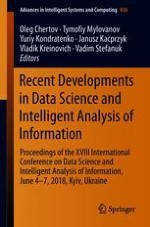This book constitutes the proceedings of the XVIII International Conference on Data Science and Intelligent Analysis of Information (ICDSIAI'2018), held in Kiev, Ukraine on June 4-7, 2018. The conference series, which dates back to 2001 when it was known as the Workshop on Intelligent Analysis of Information, was renamed in 2008 to reflect the broadening of its scope and the composition of its organizers and participants. ICDSIAI'2018 brought together a large number of participants from numerous countries in Europe, Asia and the USA. The papers presented addressed novel theoretical developments in methods, algorithms and implementations for the broadly perceived areas of big data mining and intelligent analysis of data and information, representation and processing of uncertainty and fuzziness, including contributions on a range of applications in the fields of decision-making and decision support, economics, education, ecology, law, and various areas of technology.
The book is dedicated to the memory of the conference founder, the late Professor Tetiana Taran, an outstanding scientist in the field of artificial intelligence whose research record, vision and personality have greatly contributed to the development of Ukrainian artificial intelligence and computer science.
